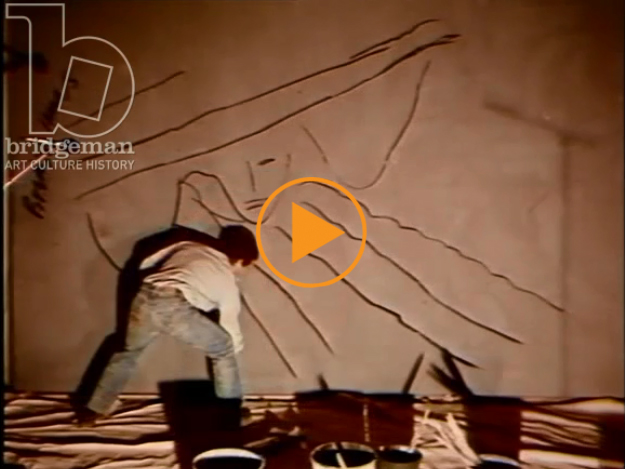Published 03/12/2019
Bruce McLean is a Scottish sculptor, performance artist and painter. While he is known for his theatrically posed photographs, McLean dislikes the term ‘performance art’ preferring instead to be recognised as a sculptor who makes live work.

McLean was born in Glasgow in 1944 and studied at the Glasgow School of Art from 1961 to 1963. Many of his friends stayed in Glasgow at the time and McLean broke off from his group to study at Saint Martins in London, from 1963 to 1966, where he studied alongside Phillip King and under Anthony Caro. He arrived in London in the middle of the 1960’s revolution.

1. You studied at Glasgow School of Art and St Martins - which did you prefer?
Two years’ general course at the Glasgow School of Art. An excellent three years at St. Martin’s School of Art, fabulous. From 1963-66, I had the best time and it changed my life – when I made my first enquiry into sculpture, past, present and future.

/ Bruce McLean (b.1944) / English
2. What is your favourite time of the day to be in the studio?
Morning.
3. You firmly established yourself within the contemporary art scene with works such as Pose Work for Plinths (1971) and one-day “retrospective” King for a Day at Tate in 1972. How did you come up with the idea of a one-day retrospective?!
In order to remove myself from the Art scene. In 1969, I decided to give up art, so I worked on a retrospective: work is documented, a catalogue is produced, followed by a show – end of story. I was invited to show at the Tate Gallery in 1972 – the perfect location for a retrospective. I proposed that the show was the catalogue and the catalogue was the show – one day is enough! People came and bought the catalogue, and the show and I slowly disappeared.

4. You call yourself an Action Sculptor. What does sculpture mean to you?
I am a sculptor. Anthony Caro thought I was a sculpture.
5. You are also a printmaker, painter and film maker. Most recently you have shown your new film work, what is it about?
My recent film, made with old friend Gary Chitty was written in 1987 and made in 2019. The subject matter is the same – nothing has changed. The title of the film, The Decorative Potential of Blazing Factories, sort of informs the viewer. It’s about a North South Summit and a love affair! A collapsing fireplace and a health and safety committee, and the right site for a political handshake.

5. Food is a reoccurring theme in your work, from potato prints to bars. You were commissioned to design an interior in a disco in Tokyo - how did that come about?
I designed the bar at the Arnolfini Gallery with David Chipperfield and was invited by David to design the interior and bar of a disco in Tokyo called Bingo Bingo Bango Bongo.

6.Finally if you could invite 6 people to dinner who would it be?
Rosy, my wife, plus 3 ladies – Joan Eardley, Lauren Bacall and Maria Callas, plus three men, Jack Benny, Joseph Beuys and John Cooper Clark.

McLean has had a long career producing paintings, ceramics, prints, work on film, theatre and in books. He was head of graduate painting at the Slade School of Fine Art, London, and has enjoyed one-man exhibitions at the Tate Gallery, London, The Modern Art Gallery in Vienna and the Museum of Modern Art, Oxford. In 1985 he won the John Moores Painting Prize.

McLean currently lives and works in London.
Find our complete selection of Bruce McLean content here.
Discover a 20 minute Bruce McLean video. Still images of Bruce McLean at work in his studio with voice over narration in interview. Some sculptures photographed during their installation at the Whitechapel Art Gallery, April 1983.

Bridgeman Images | Image. It’s Everything
Are you looking to license art, culture and historical images? Bridgeman Images offers the highest resolution rights managed images for licensing. Please contact us for free image research or to learn more.


